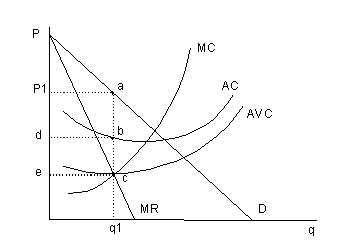Definition
Monopoly refers to a market where a particular individual has enough control over the production or supply of a certain product or service to the extent that he can determine the terms under which other parties who are in the market can access the goods and services (Varian, 2003). Monopolies derive a significant part of their market power from the barriers of entry; this ensures that they keep at bay any potential competition.
Characteristics
Pure monopolies exist in a market that is characterized by a single firm that is the sole producer of a good or service that lacks close substitutes. Pure monopolies have three major characteristics:
- Only a single seller exists in the market,
- There exist no close substitutes to the firm’s products,
- Prices are set too high; however, predatory pricing may be introduced to demolish competition,
- The markets are inefficient because of the absence of competition,
- Innovations may be high in the industry due to the promise of high profits,
- Companies in the industry may collude in order to maintain the monopoly power by key firms, and
- Barriers of entry characterize the market.

The above diagram represents both the short run and the long run equilibrium positions of a monopoly. The monopoly aims at profit maximization since there are barriers of entry into the market. The monopolist enjoys the surplus profits marked by area P1abd.
Conventionally, monopolies have had no incentive for being innovative; this has resulted in consumers paying higher for lower quality products. Monopolies lack the incentive to undertake research and development since their profits will not be substantially increased by any developments of any new products. A good example of such a monopoly is Microsoft.
However, there is a counter argument that has been developed by (Chen and Schwartz, 2010); they argue that secure monopolies have an incentive to be innovative. Comparing an entrant to a monopolist reveals that, by introducing a new product a monopolist diverts profits from the conventional product; however, he may earn higher profits by coordinating the prices of the two products.
Reference List
Chen, Yongmin and Schwartz, Marius (2010) Product Innovation Incentives: Monopoly vs. Competition. Web.
Varian, Hal R. (2003) Intermediate Microeconomics: A Modern Approach. 3rd edition. New Delhi, East-West Press.